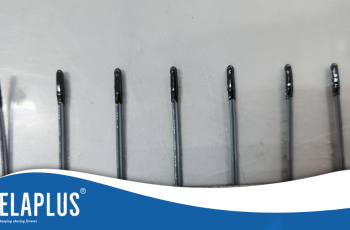Elaplus Case Study | Conformal Coating Solution for Temperature Sensors External Use
With the continuous development of smart devices and automotive electronics technology, temperature sensors, as an important component, are playing an increasingly critical role. It is crucial to provide sufficient protection to ensure the stable operation of temperature sensors in various complex and harsh environments. Especially for external triple protection, sensors not only need to be waterproof, dustproof, and corrosion-resistant, but also need to resist external physical impacts. Therefore, selecting appropriate potting materials for external protection has become the key to improving sensor performance and extending its service life. BackgroundIn modern industries, automobiles, and home appliances, temperature sensors are widely used in important equipment such as monitoring systems, smart homes, and automotive engine control. They are usually installed in areas with harsh working environments, such as engine compartments, battery packs, climate monitoring equipment, etc. The temperature changes, moisture, dust, and external impacts in these areas can pose a certain threat to the sensors. In order to improve the stability and durability of sensors, it is crucial to adopt external three proof protection.External triple protection refers to providing sensors with the ability to resist water, dust, and corrosion, which requires sealing or coating to achieve. The external three proof protection material of the temperature sensor not only needs to have high-strength physical properties, but also needs to have high adhesion and toughness to prevent external damage and physical impact.In this process, the selection of sealing materials is particularly crucial, ensuring that their viscosity is moderate and can evenly cover the outer surface of the sensor, while also possessing excellent hardness and mechanical properties to resist wear and external impacts during long-term use. ChallengeWhen selecting external three proof protection materials for temperature sensors, we encountered the following main challenges: Viscosity requirementsThe external protection of temperature sensors requires a material with moderate viscosity to…


